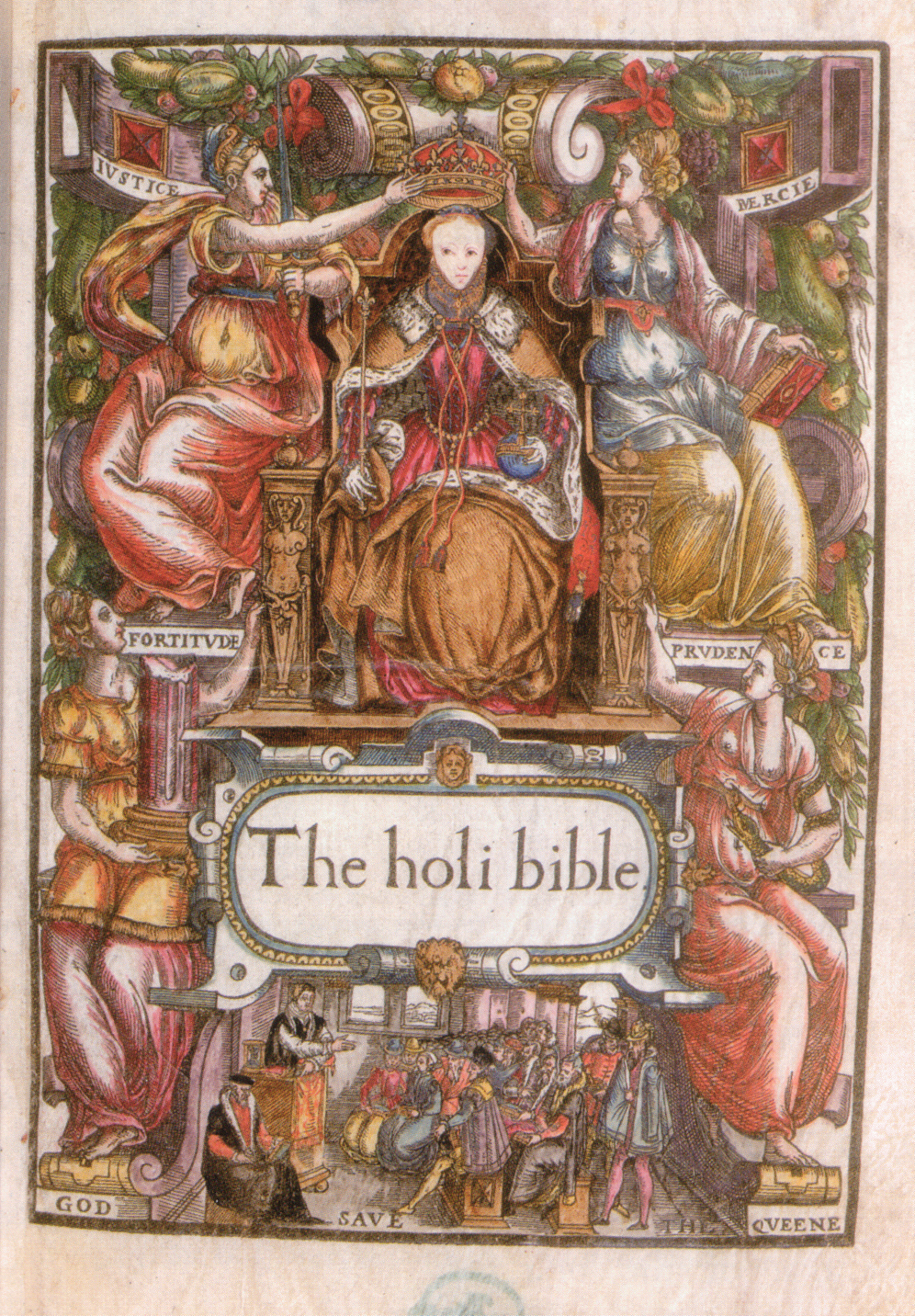My research paper looked into Early Modern Anti-Semitism and how it affected literary works of the Early Modern period. Specifically, The Merchant of Venice by Shakespeare and The Jew of Malta by Christopher Marlowe were considered with respect to the characters Shylock and Barabas. Through my various research excursions, I found that although Shylock and Barabas are both portrayed very negatively in their respective plays, Barabas is more purely evil than Shylock. With this difference in mind, it is still important to understand that the Early Modern perception of the Jew was very negative and stereotypical and both characters reflect this negative image. The stereotype of the time included titles like usurer, child-sacrificer, Christ-killer, and Jew-Devil. Jews were also typically pictured with horns and poison. All of these stereotypes were supported or enhanced by contemporary Early Modern art.
Literary pieces like The Merchant of Venice and The Jew of Malta were huge successes because of the negative portrayal of their Jewish characters, even though it is likely that neither writer ever knew a Jew personally. Dr. Roderigo Lopez was brutally executed in 1594 for allegedly planning to poison Queen Elizabeth, and it was his previous Jewishness sealed his fate and “proved” his guilt. The sculpture, Moses carved by Michelangelo in 1515, portrays the great Biblical Jew with horns. The woodcut “Jew Poisoning a Well” completed in 1569 shows a Jew poisoning a well that the Devil is urinating into and there is also an image of a child on a cross. All of these art forms support the negative stereotyping of Jews in Early Modern Europe.
Such archetypes of the time helped to form the horrible characters of Shylock and Barabas. Both men claim to hate Christians and they go to extremes for money. Their behavior certainly seems to mark them as Jew-Devils and as such they become innately negative characters. They are acceptably illustrated this way, because such horrible Anti-Semitism was culturally acceptable in the Early Modern Period. Things like the Bible seemed to support it, and the judicial system provided its two cents with the hearing in the Roderigo Lopez case. The people cannot be blamed for their conditioning, but the suffering of the Jewish population in Europe at the time cannot be ignored.
Works Cited (all of these were used in my paper)
USED FOR PRESENTATION:
Biberman, Matthew. Masculinity, Anti-Semitism, and Early Modern English Literature: From the Satanic to the Effeminate Jew. Burlington, VT: Ashgate Publishing Company, 2004. Print.
The Bishops Bible. Web.
Boaistuau, Pierre. “Jew Poisoning a Well.” Histoires Prodigieuses. 1569. (woodcut)
Kaplan, M. Lindsay. The Merchant of Venice: Texts and Contexts. New York: Bedford/St. Martin’s, 2002. Print.
Marlowe, Christopher. The Jew of Malta and The Massacre at Paris. Ann Arbor, MI: Edwards Brothers Inc., 1966. Print.
Shakespeare, William. The Merchant of Venice. The Norton Shakespeare. 2nd Edition. Stephen Greenblatt, Walter Cohen, Jean E. Howard, Katharine Eisaman Maus. New York, NY: W.W. Norton & Company, Inc., 2008. 1121-1175. Print.
SECONDARY (for those interested in further research):
Dessen, Alan C. “The Elizabethan Stage Jew and Christian Example: Gerontus, Barabas, and Shylock.” Modern Language Quarterly 35.3 (1974): 231-245. Web. 7 November 2009.
“The Edict of Expulsion: Enacted 1290.” Britain Express. Web. 16 November 2009.
Kamin, Ben. “Why Do Jews Have Horns?” Examiner.com. 30 January 2009. Web. 17 November 2009.
Katz, David S. “Dr. Lopez and Shylock.” Commentary 102 (1996). Web. 16 November 2009.
Michaelangelo. Moses. 1515. San Pietro in Vincoli, Rome.
Sanders, Lauren. Queen Elizabeth’s Dr. Roderigo Lopez versus Shakespeare’s Shylock: Similarities, Differences, and Their Influences on Elizabethan England. 2008. Web. 16 November 2009.
Shapiro, James. Shakespeare and the Jews. New York: Columbia University Press, 1996. Print.
Thursday, December 10, 2009
Wednesday, December 2, 2009
Research Blog #5 - The Usury Bill

The Usury Bill was a much debated bill that prohibited usury under the reign of King Henry VIII. It was a compromise and compilation of many previous bills before it's time. It was eventually passed into law in 1571. It lays down specifics as to interest and it became illegal to charge interest in the name of God. This shows the amount of importance Englishmen placed on usury. It further emphasizes how bad it was that Shylock was deemed (and a self-acclaimed) usurer.
>Kaplan, M. Lindsay. The Merchant of Venice: Texts and Contexts. New York: Bedford/St. Martin’s, 2002. Print.<
he kills her-he stabs the empress-he kills TITUS-he kills SATURNINUS-confusion follows
The title of this blog contains the stage directions found in Act V Scene 3 of Titus Andronicus within the space of nineteen lines. This is blood and guts madness. It is horribly fascinating. It is the dream of young America come true in Early Modern drama. America's youth loves gore and violence...and this is a stunning display of such. The lines of good and evil are so horribly blurred here that when "confusion follows" it only seems natural. The numbing effect of the brutality has the audience saying "this is kinda cool." How bizarre. The play starts off really dark and sad, and the killings have a horrible effect on the audience. However, as the play progresses everything seems to come unhinged and crazy. The killings are all over the place and for no rational reason. Everyone ends up dead, but I feel like it is fitting. I am in no way upset by how the play ends with dead bodies everywhere. It is just ridiculous and over the top and too much. But REALLY entertaining. I do like this Shakespeare. The shift and numbing effect really makes the play seem like one of the SCARY MOVIES or something like a farce. Titus was an interesting character and I am not sure how his hero thing ended up working out for him, but the play really has a cool way of making you not sure who to root for and the fun is that it doesnt really matter in the end. Perhaps this is the point.
Monday, November 23, 2009
titus...
So far this play presents an interesting plot-line. It is a little complicated and I definitely had to read through it a couple times before I really understood exactly what was happening. I am impressed with all the action that is happening so far. Already I have seen four dead bodies! I know it is going to get really good when there is so much gore to start off with. I feel like I can't really make up my mind about any of the characters yet. I think Titus is a good guy even though he killed his own son...but that was an extenuating circumstance. I guess. I think I am definitely skeptical about Saturninus and Bassianus. They just seem like really sketchy characters to me. Tamora is awesome. She is a fascinating female character - even for Shakespeare. I like her so far. We will see how my opinions progress as I move along throughout the play. Interesting first act though...for sure!
Thursday, November 19, 2009
Research Blog # 4 - The Bishops BIble

This is the edition of the Bible that Shakespeare would have been familiar with. It was an English translation of the Bible approved by the Church of England in 1568 and it was "extensively revised" in 1572. Later it was used as the base for the translation of the King James Version in 1611. It was developed because the people of the Anglican Church were displeased with the Geneva Bible and they felt that the Great Bible "was severely deficient." It was not meant to be a domestic bible, but one that was for readings at a church service. The first edition was really big and contained over 1oo full-page illustrations.
>http://en.wikipedia.org/wiki/Bishops%27_Bible
Wednesday, November 18, 2009
Research Blog #3 - "Jew Poisoning a Well"

This woodcut is from Pierre Boaistuau's Histoires Prodigieuses. It is dated around 1569 and depicts a Jewish man poisoning a well that the Devil is urinating into and in the background there is a child hanging on a cross. All these images support Anti-Semitic beliefs about Jews in the Early Modern period and each part represents a different stereotype of the Jew. There is the stereotype about Jews being in a relationship with the Devil, a common fear was that Jews were very dexterous with poisons, and there was another morbid belief that Jews sacrificed and ate children. While this is all very disturbing, it provides insight about the perception of Jews in Early Modern England.
"Chop off his head"..."Off with his head"
Richard gets more and more decapitation-happy as the play progresses. As soon as he started talking about killing the two boys for no real reason, I began to feel less sympathy for the morbidly intriguing social climber. I feel like his evilness is getting out of control and it is really bizarre to see how he continues to fool people even though he has killed so many people and said so many bald-faced lies. A prime example is in Act IV scene 4, when Richard is tries to (and succeeds in) convincing Queen Elizabeth that he should be able to marry her daughter, Elizabeth. Queen Elizabeth already knows what horrors Richard is capable of! How can she be so impressionable? Richard is clearly a first class smooth talker. His confidence is unbelievable and fascinating, much like the rest of his qualities. In short, as the play goes on, Richard really begins to fulfill his monstrous descriptions and expectations. His animal descriptions, quick temper, lack of conscience, and ability to manipulate people with his words is astonishing and I would easily attribute it all to his monstrosity. I am still intrigued by Richard and the psychology of his character, but I am less sympathetic to him now. I think he deserves no sympathy.
Subscribe to:
Posts (Atom)
